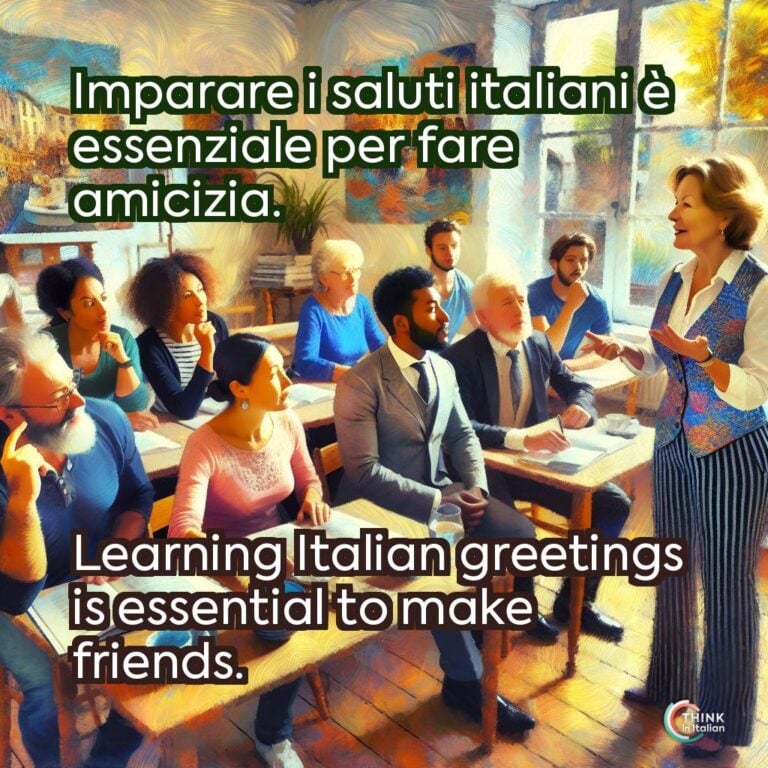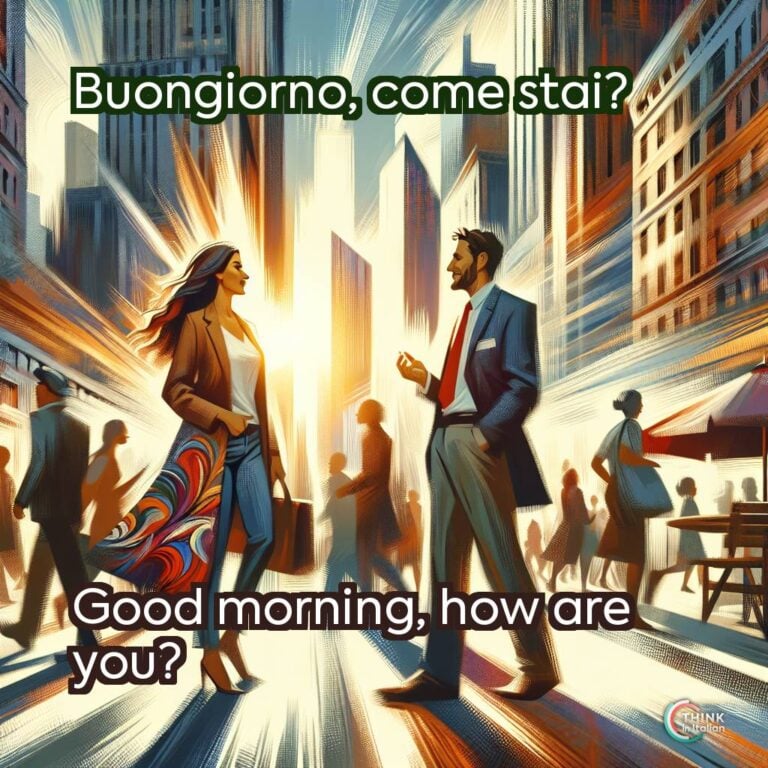How to say “Hello” in Italian
When learning a new language, one of the first things you pick up is how to greet people. The easiest way to do so is by saying ciao. The meaning of ciao is very straightforward: it corresponds to the English “hello”, “hi”, but also “bye”.
It’s probably the most well-known Italian greeting around the world. It’s informal and friendly, a simple word that opens doors to conversations, relationships, and authentic cultural experiences.
Ciao! Come stai?
Hi! How are you?
Other Greetings in Italian
Buongiorno
Buongiorno literally means “good day”, but it is how we say “good morning” in Italian. It is the standard polite greeting during the first half of the day, up until around lunch. It’s versatile and appropriate in both formal and informal settings.
Buongiorno, come va?
Good morning, how’s it going?
If you’re ever unsure of whether ciao is too casual, buongiorno is a safe bet in most settings.
Buonasera
Just like buongiorno is for the morning, buonasera is for the evening. In fact, it translates to “good evening”. It is generally used from about 4 or 5 p.m. onwards. It’s formal enough for most situations but still pleasant and welcoming.
Salve
I always have doubts about whether to use buongiorno or buonasera. Between 1 p.m. to 4 p.m. I always wonder: is it still daytime or is it already evening?
This is where salve comes in handy. It is a perfect middle ground: it’s polite and respectful without being overly formal. It feels like a nice counterpart to ciao, withouth specifying giorno (day) or sera (evening).
Pronto
If you are about to have a conversation on the phone, you might need to know how to answer. Oddly enough, Italians answer the phone with pronto which literally translates to “ready”.
It sounds strange at first, but it really comes from being ready to speak on the phone. You’ll hear it every time you call someone in Italy.
Pronto, chi parla?
Hello, who’s speaking?
The Right Greeting for Every Situation
It’s easy to feel overwhelmed by the different ways to say hello in Italian, but it all comes down to choosing the right greeting for the situation.
Ciao is great with friends, while buongiorno and buonasera are perfect for more formal settings. Salve fits nicely in between.
As a native Italian speaker, even I sometimes find myself hesitating between buongiorno and buonasera, especially in the late afternoon, and that’s where salve comes in handy.
Once you get the hang of it, choosing the right greeting becomes second nature. So next time you’re in Italy or practicing with friends, give one of these greetings a try!






